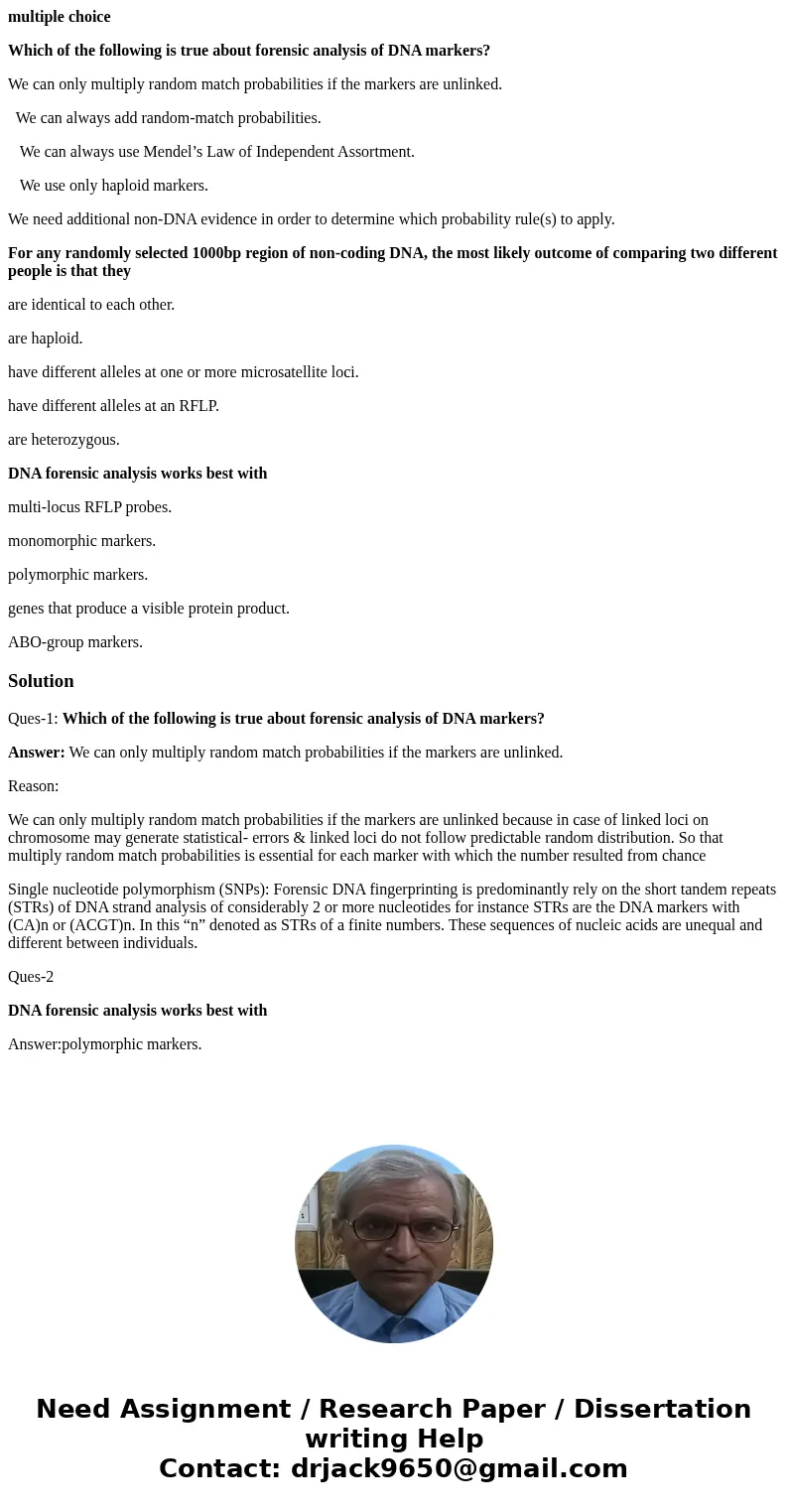multiple choice Which of the following is true about forensi
multiple choice
Which of the following is true about forensic analysis of DNA markers?
We can only multiply random match probabilities if the markers are unlinked.
We can always add random-match probabilities.
We can always use Mendel’s Law of Independent Assortment.
We use only haploid markers.
We need additional non-DNA evidence in order to determine which probability rule(s) to apply.
For any randomly selected 1000bp region of non-coding DNA, the most likely outcome of comparing two different people is that they
are identical to each other.
are haploid.
have different alleles at one or more microsatellite loci.
have different alleles at an RFLP.
are heterozygous.
DNA forensic analysis works best with
multi-locus RFLP probes.
monomorphic markers.
polymorphic markers.
genes that produce a visible protein product.
ABO-group markers.
Solution
Ques-1: Which of the following is true about forensic analysis of DNA markers?
Answer: We can only multiply random match probabilities if the markers are unlinked.
Reason:
We can only multiply random match probabilities if the markers are unlinked because in case of linked loci on chromosome may generate statistical- errors & linked loci do not follow predictable random distribution. So that multiply random match probabilities is essential for each marker with which the number resulted from chance
Single nucleotide polymorphism (SNPs): Forensic DNA fingerprinting is predominantly rely on the short tandem repeats (STRs) of DNA strand analysis of considerably 2 or more nucleotides for instance STRs are the DNA markers with (CA)n or (ACGT)n. In this “n” denoted as STRs of a finite numbers. These sequences of nucleic acids are unequal and different between individuals.
Ques-2
DNA forensic analysis works best with
Answer:polymorphic markers.

 Homework Sourse
Homework Sourse